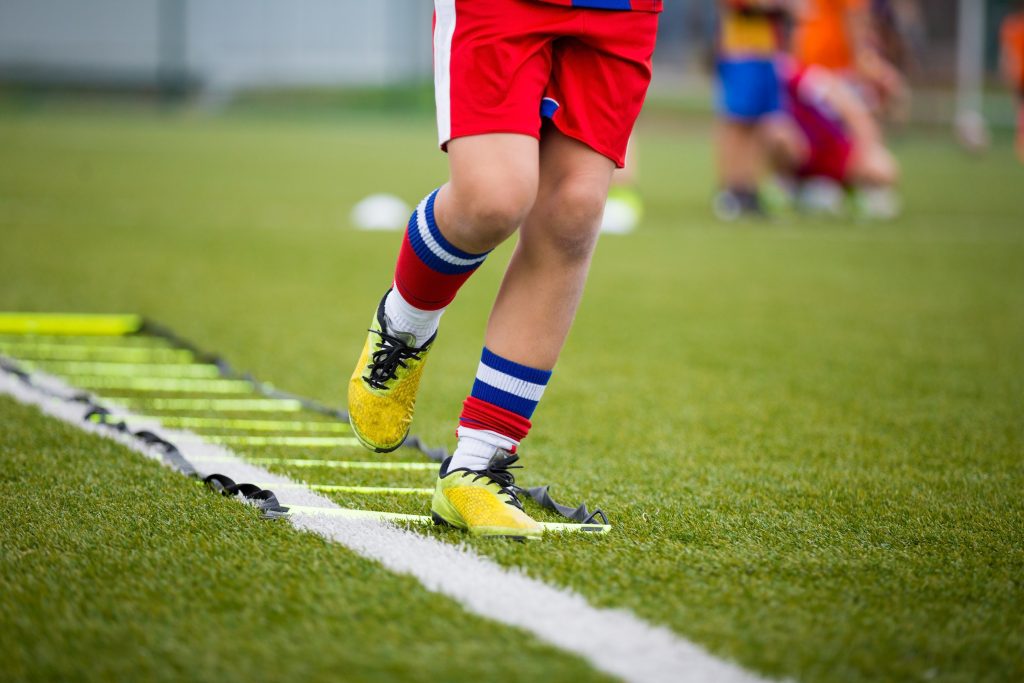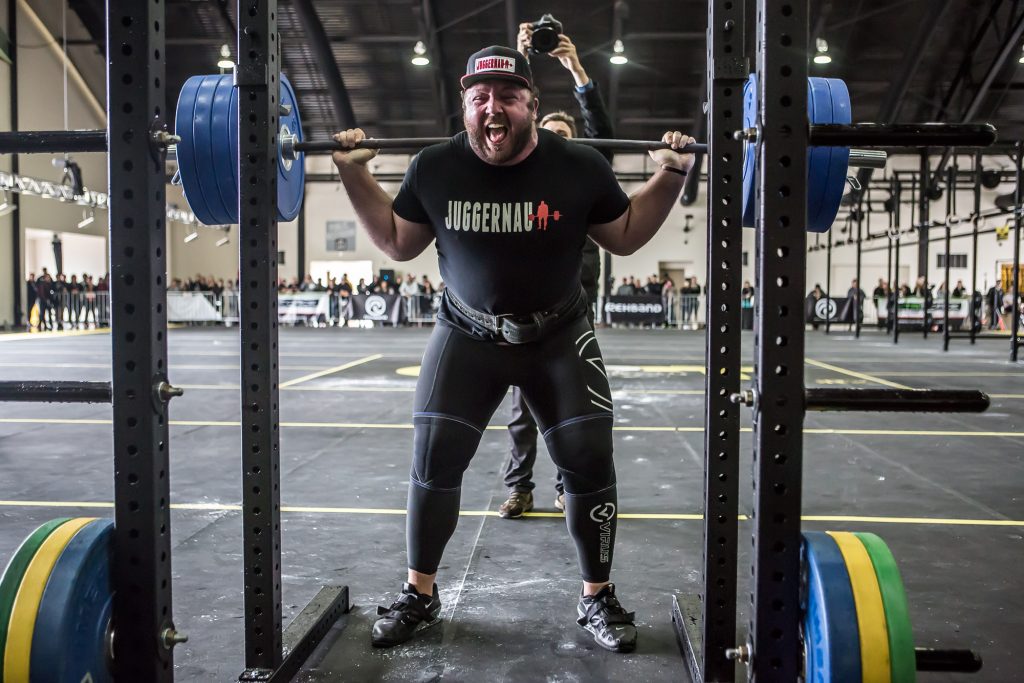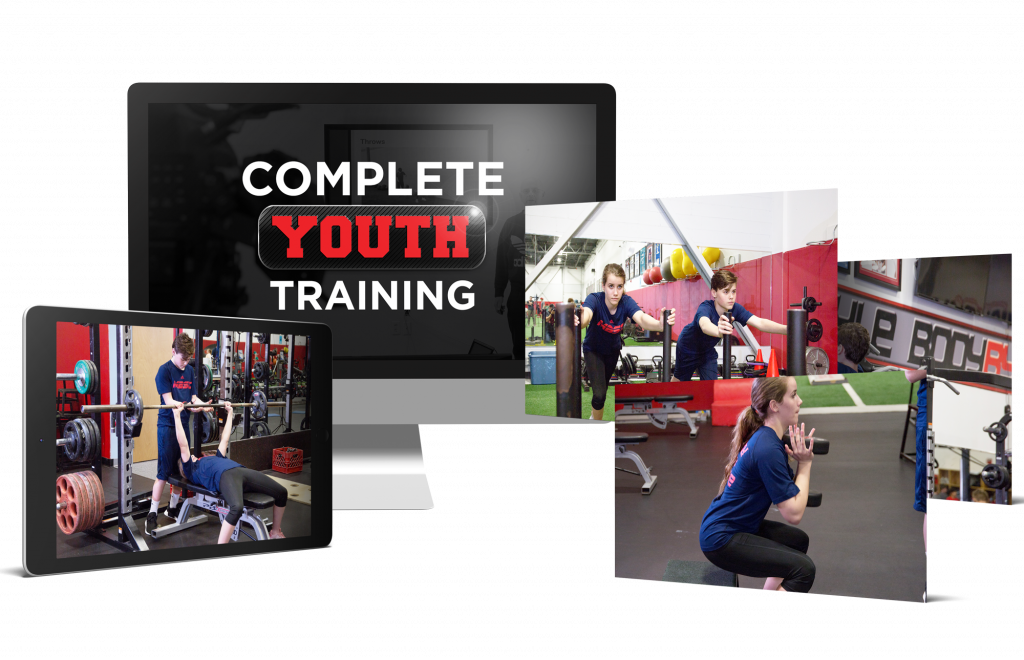4 Things to Consider When Training Youth Athletes
Youth training is a can of worms and hotly debated topic to say the least – right up there with GMOs, gun reform, and who’s the better wizard: Dumbledore or Gandalf?
I’ve been training youth athletes for the better portion of my career, working with kids ranging from 9-16 from every sport imaginable, and their parents (<— said with a hint of shade), so I’m fairly confident I have the requisite experience (15+ years) and knowledge (physiology, programming, and 80’s cartoon trivia) to chime in on the topic.
Lets do this.

Copyright: matimix / 123RF Stock Photo
5 Things to Consider When Training Youth Athletes
1. Early Sports Specialization Sucks
There, I said it.
I, and many other prominent and/or experienced coaches, am pretty adamant on this point.
Nothing derails a young athlete’s development more – both physiologically and athletically – than playing one sport year round.
When I was kid growing up I played a sport for every season. I one hundred percent believe that playing a variety of sports throughout the year allowed me to excel in baseball, which is what I ended up playing in college.
Playing several sports helped me to develop a multitude of athletic abilities and made not just a better baseball player but a better athlete. Moreover, it kept me healthy and prevented me from developing pattern overload injuries that are quite common in sports like baseball, gymnastics and hockey, to name a few.
I stress these points with every young athlete I work with.
It saddens me when I start working with an athlete and I ask him or her which sports he or she plays, and they respond with “tennis” or “football” or lacrosse” or “ninja’ing.”
The stats don’t lie: 92% of NFL Draft – rounds 1-3 – were multiple sport athletes in high-school.
And I have to assume that that stat mirrors other leagues such as MLB, NBA, and the NHL.
2. Kids Aren’t Professional Athletes
Weird, right?
There’s zero need to get fancy or ornate with kids in the weight-room. They need to learn how to throw, sprint, lift, and jump.
There’s a great analogy I heard strength coach Chad Wesley Smith use once when discussing the training habits of elite athletes and lifters.

Many people are quick to ask how “so and so (referring to any elite level athlete or lifter) trains?” or “what program is he or she using?”
The implication being….do what they’re doing and you’ll get the same results.
Choosing the right parents aside, it doesn’t work like that.
As Chad noted:
“The better question isn’t “what are they doing NOW, but rather what did they do 10, 15, 20 years ago to help set the foundation that allowed them to succeed further down the road?”
I can’t tell you how many times a parent would bring their kid to Cressey Sports Performance when I was there and ask if or when their kid would be doing speed work or more advanced agility drills?
My inner dialog would go something like this:
“Dude, your kid can’t perform a walking lunge without looking like he’s going to dislocate his knee cap.
The fuck outta here.”
What I’d actually say:
“Speed work and agility drills at this stage are kinda like giving a Ford Focus a sweet paint job and rims to give the appearance of being fast. However, until we address the horsepower – I.e., work on the basics & getting stronger – it’s still going to be a Ford Focus.”
Youth athletes need Goblet Squats and how to learn to perform a push-up well (or hell, to be told to go climb a tree), not parachute resisted sprints and CrossFit.
3. Sport-Specific Training Doesn’t Exist
There’s no such thing as a “baseball-specific program” or a “football-specific exercise.” I understand there are some exceptions to the rule and a degree of semantics here, but for all intents and purposes the statement is true.
As I noted above, the end goal is to make someone a better athlete and to immerse he or she in an environment that allows them to explore all facets of movement and locomotion.
Not to create a one-trick pony.
What’s more, the weight-room – and strength training in particular – shouldn’t go out of it’s way to emulate what’s accomplished on the field or court. Athletes get enough “sport specific training” playing their respective sport(s).
No, the weight-room should be used as a tool to marinate kids in movements and exercises they’re not accustomed to; to address weaknesses and build resiliency; to help build confidence and self-esteem; and, you know, to make their competition cry….;o)
4. Kids Aren’t Delicate Flowers. Strength Training Won’t Stunt Their Growth
This popular fallacy is NOT supported by research or clinical findings.
In his book Facts and Fallacies of Fitness, renowned exercise physiologist and bio-mechanist, Mel Siff, notes that force plate analysis shows even fairly heavy squats (exceeding body-mass) do not impose as great a load on the body as fairly casual running or jumping, which can impose joint loading which is greater than SIX TIMES bodyweight.
Thus, if resistance training is to be eliminated to promote growth plate safety, then all children must be forbidden to run and jump.
Good luck with that.
Besides, kids are like miniature Terminators. Outside of being lowered into a vat of molten metal they bounce back from nicks and falls all the time.
Furthermore, and I believe this is a point Eric Cressey has brought up before, the weight-room is a very controlled environment compared to anything that’s experienced in competitive sports.
To that end, assuming appropriate loading and exercise progressions are taken into account, the weight-room is a very safe space for a young athlete.
Complete Youth Training
Coaches, trainers – and maybe more importantly PARENTS – will love this new resource from strength and conditioning coach Mike Boyle.

One of the main goals of Complete Youth Training is to educate parents and coaches on both the correct ways to train youth athletes as well as to highlight the training methods currently being used that may be detrimental to youth athletes.
All youth training methods and principles discussed and demonstrated in Complete Youth Training are backed by a multitude of scientific research.
Coach Boyle covers E.V.E.R.Y.T.H.I.N.G from lack of parent education and the importance of fun and free play for children to appropriate strength training protocols for youth athletes and much of the (mis) information surrounding it.
There are few resources I refer to as “must have’s,” but this one ranks right up there.
It’s offered in both digital and physical format, CEUs are available, and it’s currently on sale through this Friday, May 18th.
Go….go…..GO.



Comments for This Entry
J.B. Brooks
When my oldest was 5 he wanted to be a jiu jitsu world champ, and I said, "Great, lets roll" When he was 6 he wanted to be a MLS player, I said "great lets kick the ball around." Last year he wanted to be an NBA player, I said "Shit.. I suck at basketball, but lets go play horse!" This year he wants to play short stop for the Cardinals, and I said "Great! lets go play catch." I think there is a lot of that missing for these kids. He also "works out" with me in the morning as dad/kid play time. We squat, push-up, rope climb, pull up, kb swing, and row. His younger brother sometimes gets up with us... and sometimes he doesn't. There isn't enough play in the drills/exercises these parents want their kids to do. If I was still coaching full time, I'd have already bought boyle's book, and as a parent I still might.. but there might be a market for a similar product directed at us parents specifically.May 16, 2018 at 3:01 pm |